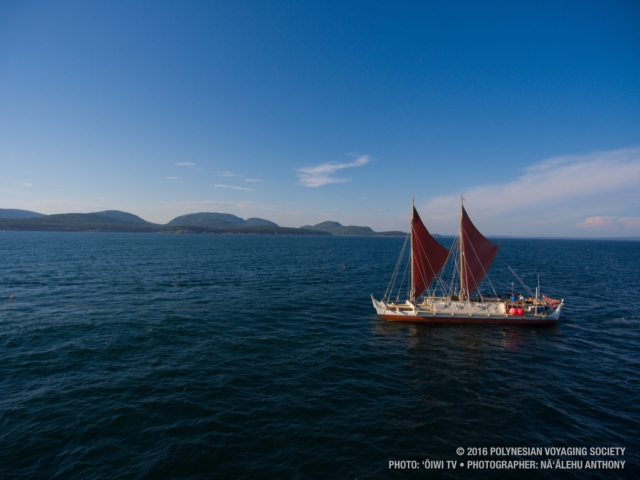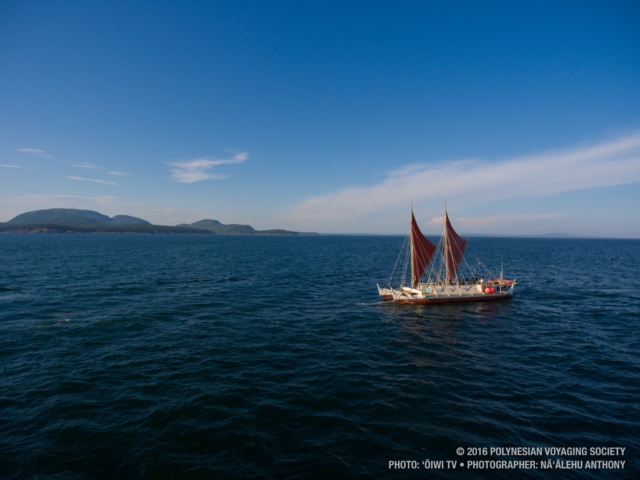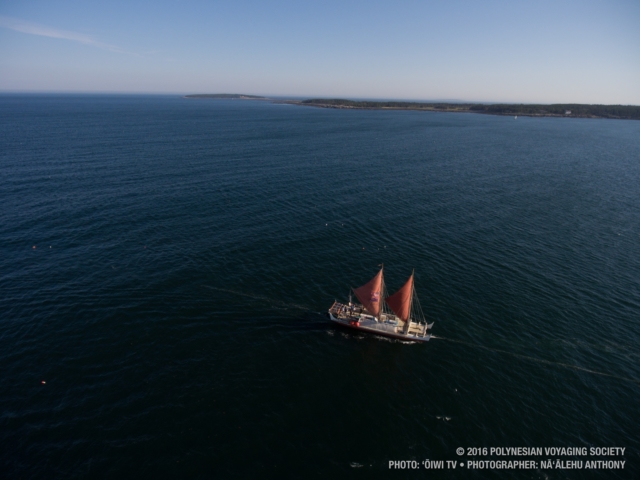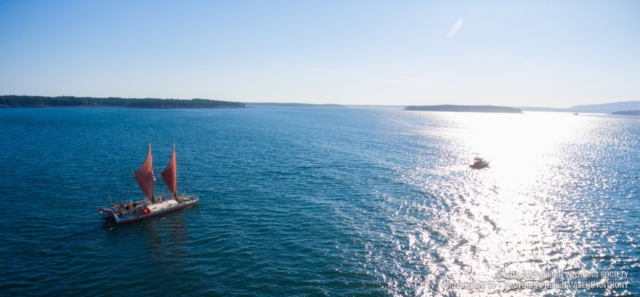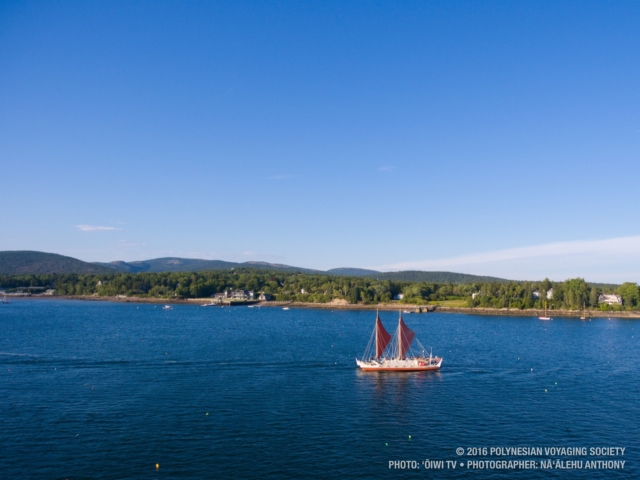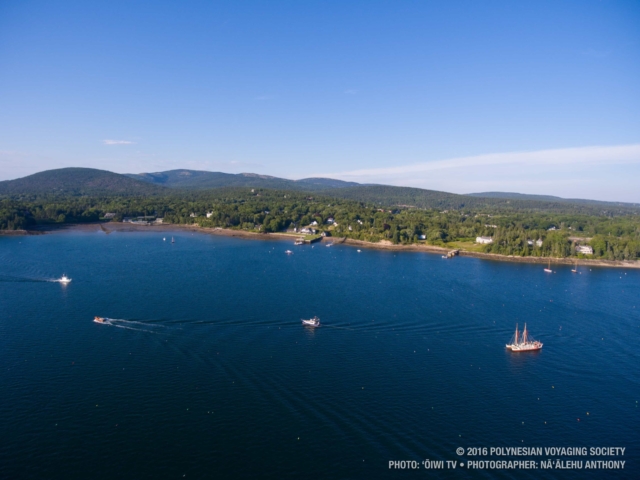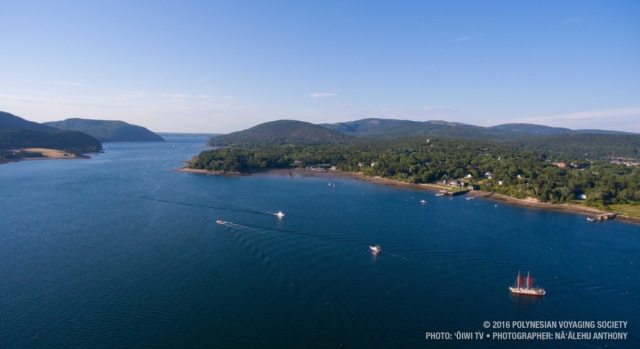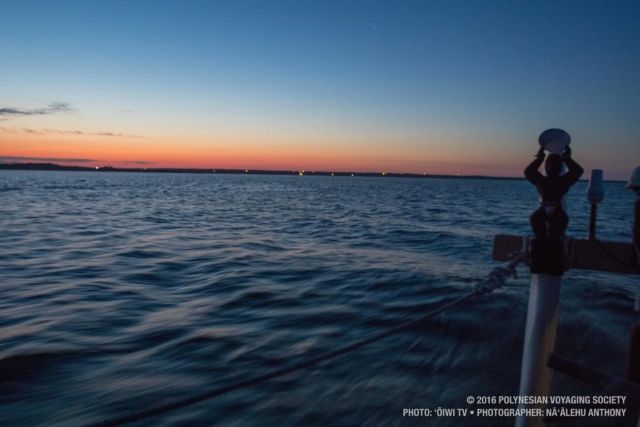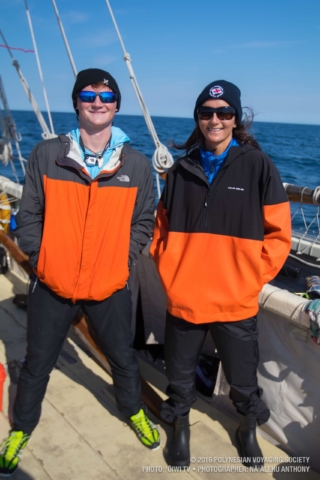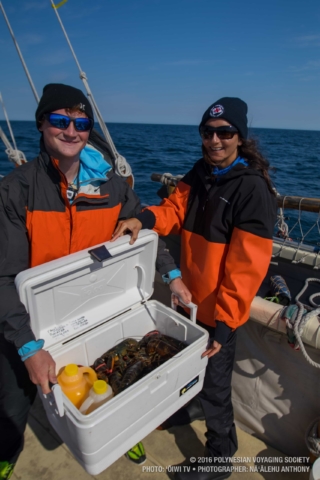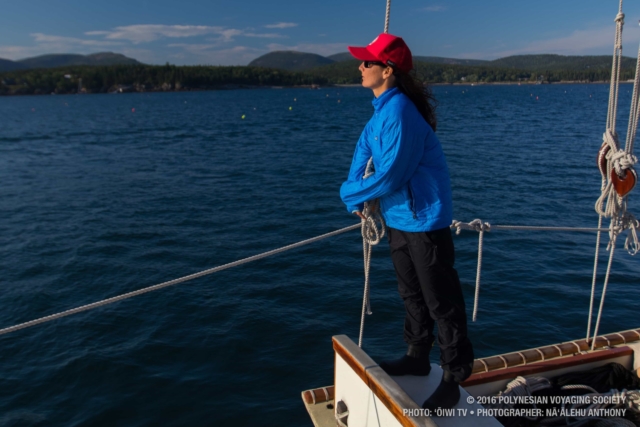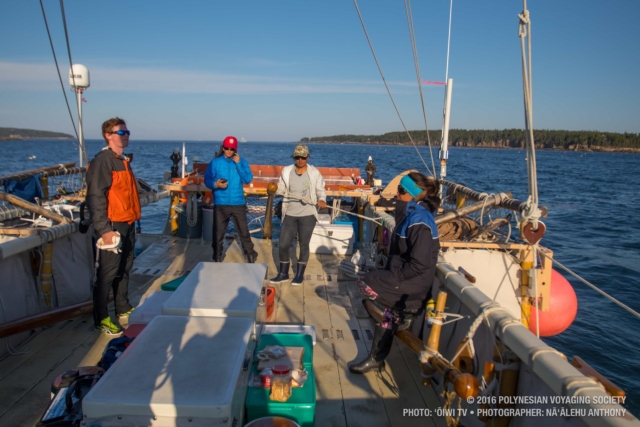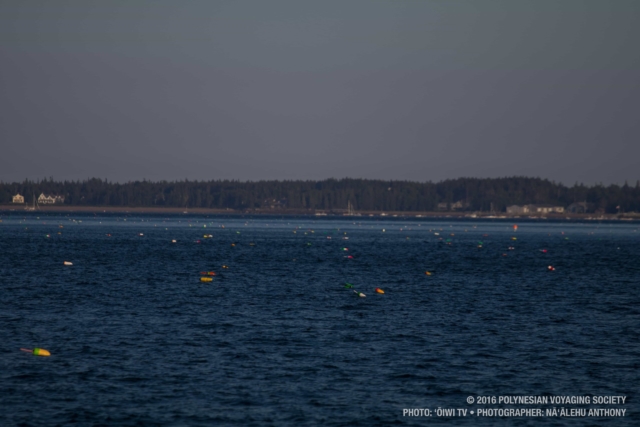
Hōkūleʻa Update | August 4, 2016
- Posted on 4 Aug 2016
- In Education, Newsletter, Photo Galleries, Teachers, Updates
 Written by Nā’ālehu Anthony
Written by Nā’ālehu AnthonyI forgot how much I missed sailing on board Hōkūleʻa.
Keala, Kālepa and I drove back to Yarmouth, Nova Scotia with just enough time to get on board Hōkūleʻa to make the transit to Mt. Desert, Maine. By the time we got our gear back to the pier and returned the car, it was about 1:30am and crew call was at 3:30am for a 4:00am planned departure. The canoe was set to go when we got there, and so we rested for a few minutes in the darkness of the early morning and got up with the rest of the crew to cast lines and depart. Exiting any new sea channel is always precarious; the one at Yarmouth was no exception, but we did so without any major hiccup or unnecessary fuss. After making sure we were safely underway, my watch went back to sleep. We were not scheduled back up on watch for four more hours, and so I jumped into the starboard 4 bunk with no problem of getting more rest after a really long day.

In summer here in the north waters of the East Coast, the wind has a crisp edge to it, and the sun is hot. The combination is great if you can find a balance between the two. At the early morning light when my watch has to get up, it’s hard to tell if the wind and sun are working well together. The canvas flap of the bunk is the only barrier between me and the outside world, and it is doing a fine job protecting me from the elements. I can still hear the wind and water rushing by and can hear the crew in conversation in the distance. This can, however, be a hard lesson in the early morning as the wind can come at us with some cold, consistent, force.

So the first thing I do before even considering going outside my bunk is feel the deck of the canoe. Is it wet? Is there rain? If there is, I need to think about what I need to do to stay dry in anticipation of four hours of standing watch in the elements. Today the deck is cold and a little damp from the dew but it is not covered by cold wet rain. Then I reach up as high as I can out side the bunk to check the temperature of the air. Is it colder than it was when I went to bed? How much wind is there? Today I can feel the wind but I also feel the heat of the morning sun competing against the wind. These are the tests of my natural environment that I practice every morning so that I can put on a jacket or a couple of layers to protect me from the weather that can be so unforgiving it becomes the villain in some of the novels from these parts.

I climb out of the bunk through the flap in the canvas that protects us. I immediately feel the warm sun on my face as I take a second to get my bearings. Its always like this in the early days of the journey, but things become more rhythmic as we progress. Getting up and seeing the sails open and the sky clear takes me to a whole other place. The horizon is empty all around us. Our main and mizzen crab claw sails are open, filled with the crisp wind that we always hope for. The last crew put up a jib so that the steering would be more balanced. I forgot how much I missed this. It has been a year since I got to sail with no sight of land, with the sails up driving us towards a destination with certainty. The morning light shines on the canoe with favor and the scene is dream-like for me. Maybe its just too early in the morning, maybe its because just hours ago we were on a dock surrounded by the sleepy town of Yarmouth. Whatever it is my brain is still having trouble processing that were sailing in the deep sea.
SB 68
Nāʻālehu
Help fund the Voyage as we sail the East Coast
Hōkūle‘a’s visit to the eastern United States is a historic milestone in her 40 years of voyaging.
Celebrate with us by pledging your support to the Mālama Honua Worldwide Voyage.
